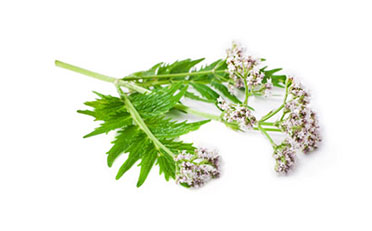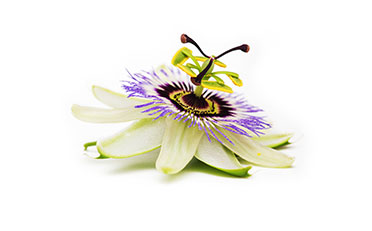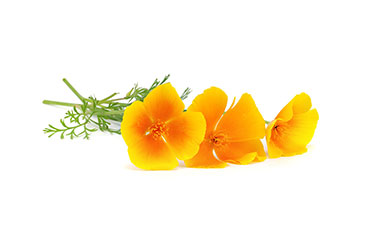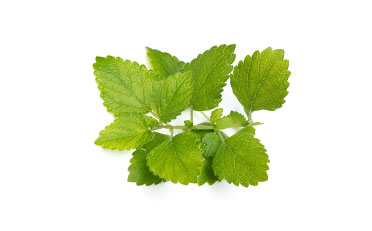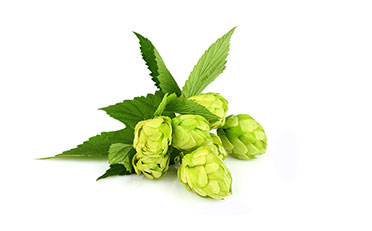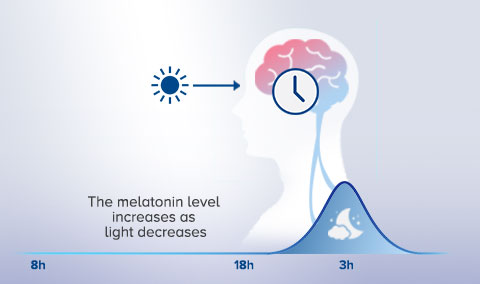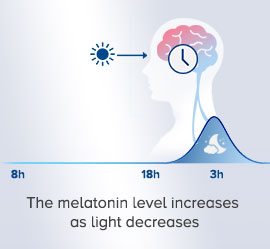
Sleeping to recover, but also to maintain vigilance, memory, learning and adapting to new situations. So sleeping plays a crucial role in our well-being. Does it play you bad tricks? Are you suffering from sleep disorders? Frequent night time awakenings? Choose soft solution: plants and melatonin. Thanks to our formula and tips for improving sleep, get a restful sleep and a find help to get to sleep.
Plants that promote sleep
Valerian root (Valeriana officinalis)
Indigenous to the temperate regions of Europe and Northern Asia, Valerian is a perennial plant that prefers moist soils, whose stem can grow to more than a metre high. Its scented flowers, grouped in corymbs at the end of the stem, are small and pale pink in colour. It has a greyish-yellow rhizome, with thick roots. On drying, its root emits a very pronounced characteristic odour which wields a surprising attraction for cats... hence its name “cat’s grass”. Valerian draws all of its properties from the underground parts: the root and the rhizome.
Valerian, a relaxing plant, helps us to fall asleep and enables users to regain calm restorative sleep.
Passion flower (Passiflora incarnata)
The passion flower is a climbing plant with spectacular flowers, and is indigenous to Brazil and Peru. There are more than 500 species in the Passifloraceae family. The name passion flower comes from the Latin passio, passion and flor flower. Its aerial parts are known in phytotherapy to aid relaxation.
Passion flower helps to reduce the feeling of anxiety. It helps to improve the quality of sleep.
Eschscholtzia (Eschscholzia californica Cham.)
Eschscholtzia is a plant of the poppy family, indigenous to California. It is commonly grown in ornamental gardens. Eschscholtzia, also called “California poppy”, comes in a range of warm orange colours.
A relaxing plant, eschscholtzia helps to improve the quality of sleep. The presence of alkaloids in the aerial parts of the flowering plant should be noted.
Lemon balm (Melissa officinalis)
Undoubtedly indigenous to Asia Minor, lemon balm was introduced in the Middle Ages to the Western part of the Mediterranean basin. Lemon balm is a perennial herbaceous plant. Its small embossed dentate leaves give off a lemony odour when they are crushed.
Given its relaxing properties, lemon balm aids rest and physical and mental relaxation.
Hops (Humulus lupulus)
The hop is a climbing plant of the Cannabaceae family. The female inflorescences that it produces have been used since the Middle Ages to flavour beer, giving it its bitterness and all its taste. Its cones are commonly used in phytotherapy for their relaxing properties.
Hops are soothing and are particularly recommended to facilitate falling asleep.
Melatonin, the sleep hormone
What is melatonin?
Called the “sleep hormone” or the “hormone of darkness”, melatonin is a hormone synthesised naturally by the organism during the night from serotonin, in the pineal gland (also called the epiphysis cerebri): it plays a part in particular in the regulation of biological rhythms.
What is its action?
Melatonin regulates our internal clock by triggering sleep1 and helps to reduce the time taken to fall asleep. When day comes, light blocks melatonin synthesis. The maximum rate of secretion is reached on average at around 3 to 4 o’clock in the morning.
The melatonin level
increases as
light decreases
Beware, the secretion of melatonin can be disrupted in some situations: exposure to artificial light, jet lag, or with age.
1 Claustrat B, Brun J, Chazot G. Mélatonine, rythme veille-sommeil et sommeil. Médecine du sommeil 2005;1(4) : 11-19.
